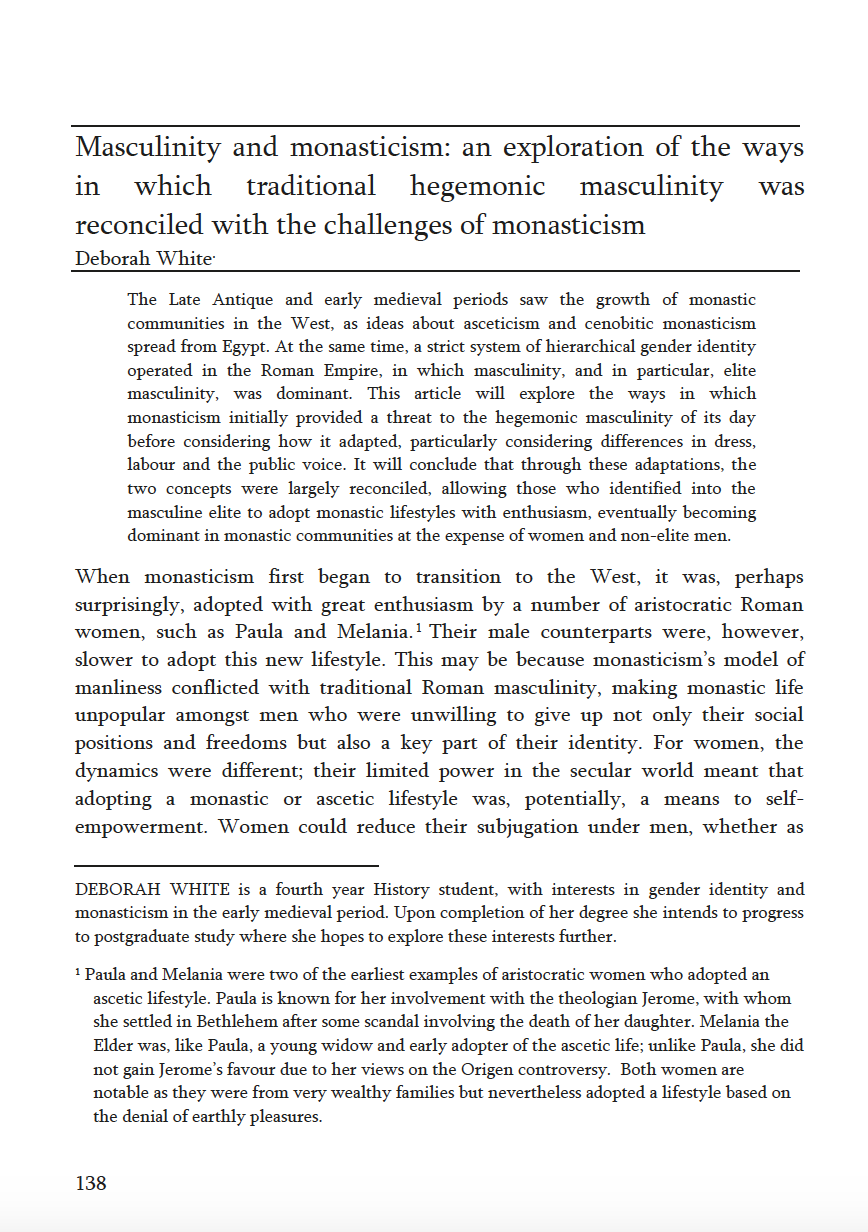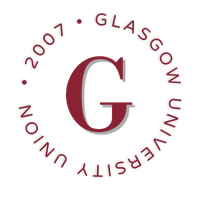Masculinity and monasticism
an exploration of the ways in which traditional hegemonic masculinity was reconciled with the challenges of monasticism
DOI:
https://doi.org/10.36399/GroundingsUG.7.223Keywords:
Monasticism, Masculinity, Late Antiquity, Early-Medieval, Gender Identity, Dress, Labour, Public Voice, EliteAbstract
The Late Antique and early medieval periods saw the growth of monastic communities in the West, as ideas about asceticism and cenobitic monasticism spread from Egypt. At the same time, a strict system of hierarchical gender identity operated in the Roman Empire, in which masculinity, and in particular, elite masculinity, was dominant. This article will explore the ways in which monasticism initially provided a threat to the hegemonic masculinity of its day before considering how it adapted, particularly considering differences in dress, labour and the public voice. It will conclude that through these adaptations, the two concepts were largely reconciled, allowing those who identified into the masculine elite to adopt monastic lifestyles with enthusiasm, eventually becoming dominant in monastic communities at the expense of women and non-elite men.

Downloads
Published
Issue
Section
License
Copyright (c) 2014 Deborah White

This work is licensed under a Creative Commons Attribution 4.0 International License.
The CC BY 4.0 license is a Creative Commons license. This is a non-copyleft free license that is good for art and entertainment works, and educational works. It is compatible with all versions of the GNU GPL; however, like all CC licenses, it should not be used on software. People are free to: Share — copy and redistribute the material in any medium or format; Adapt — remix, transform, and build upon the material for any purpose, even commercially. The licensor cannot revoke these freedoms as long as you follow the license terms. But they must conform to the following terms: Attribution — You must give appropriate credit, provide a link to the license, and indicate if changes were made. You may do so in any reasonable manner, but not in any way that suggests the licensor endorses you or your use. No additional restrictions — You may not apply legal terms or technological measures that legally restrict others from doing anything the license permits.
Please check individual article PDF copies to see if any additional restrictions apply.







